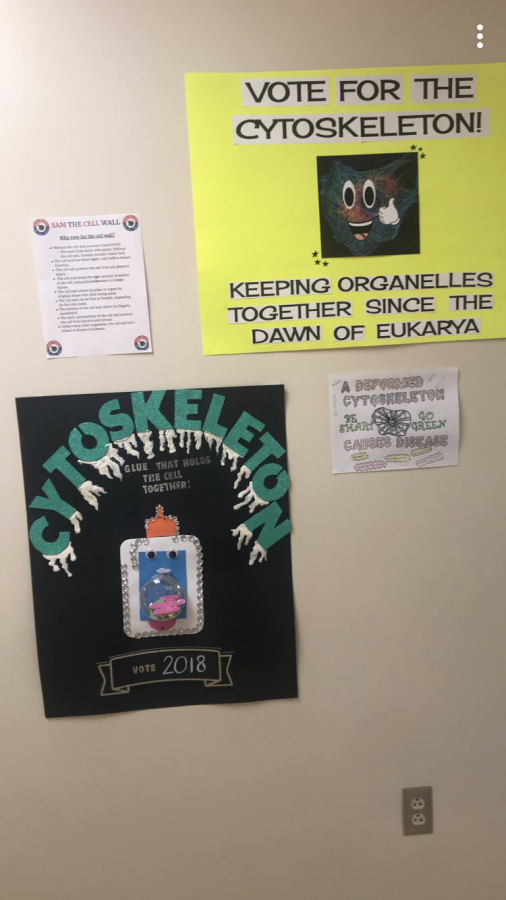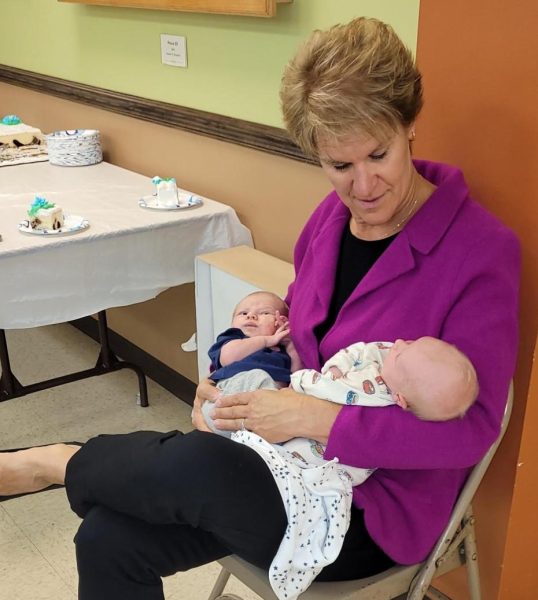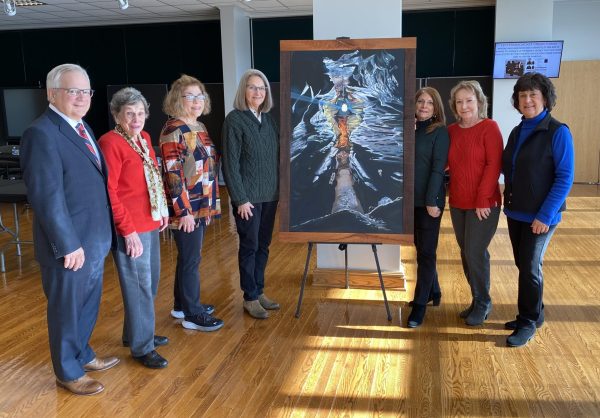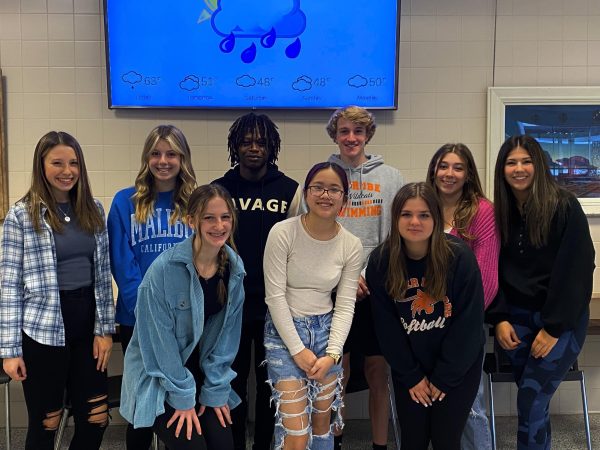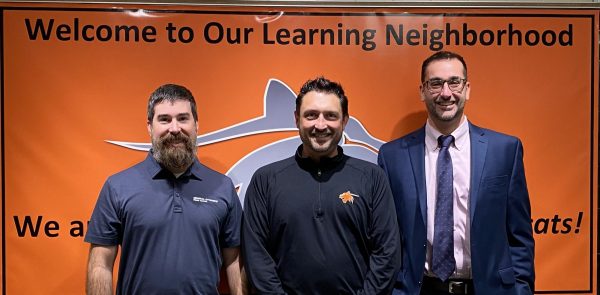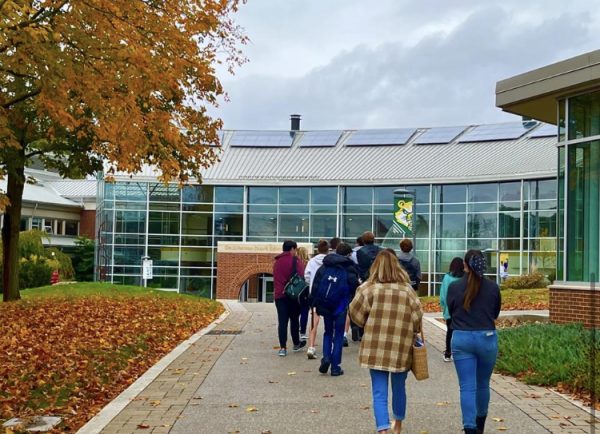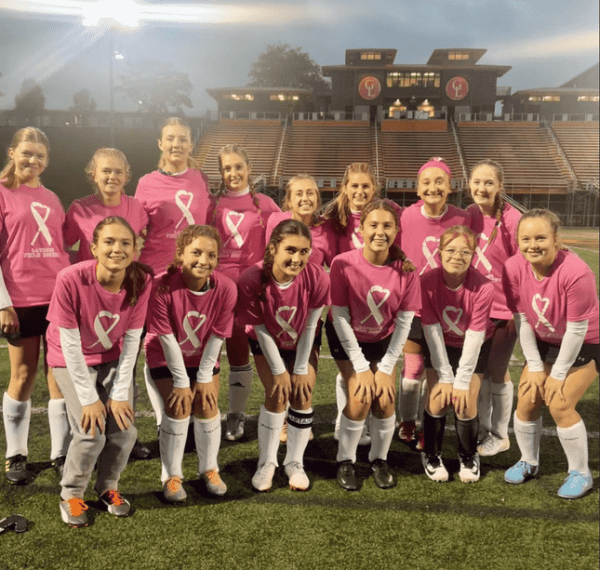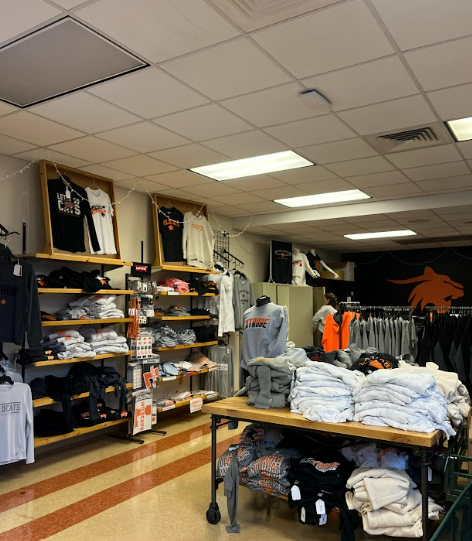AP Bio students participate in Cell Debate
The “Great Cell Debate” is a new project that has been integrated into the AP Biology curriculum this school year. Mrs. Hoopes was inspired to implement a cell campaign into her classroom after partaking in a National AP Biology Facebook group discussion.
“I became a member of the group last year after I attended an AP biology summer workshop. The group is a awesome resource for ideas, questions,and discussion of current events. The group also has a Google folder where teachers can place activities, labs, and test bank questions that are available to anyone in the group,” explained Mrs. Hoopes.
Students collaborated in groups to argue that their assigned organelle should be elected “The Most Important Organelle”. Student teams created an iconic image of the organelle, used the iconic image as a part of a campaign poster that was to be hung up in the hallway, made a 15-30 second commercial promoting the greatness of the organelle, published an informational flyer, and kept followers updated on twitter every other day. The informational flyer is where students included a catchy slogan that coincided with the function and structure of the organelle, and went into detail on why their organelle was the best.
Each group spent a month of time outside of class promoting their organelle, but they also spent a lot of time bashing on their opponents. Mudslinging was a crucial part in winning this election. Each group had to run a smear campaign on at least three other organelles, which meant they had to look up certain diseases or mutations associated with other groups organelles.
This project was designed to get students to recollect former information they had learned on cells and their function, making it a great way to practice research skills. “I think the cell campaign is a great learning tool. The students in AP bio first learn about cells in 7th grade, and cover them extensively in Academic Biology. In AP bio, cells are a part of the curriculum framework, but to save time on something that has been previously covered I wanted to find an activity that the student could do outside the classroom. This activity help the student to help recall their knowledge of the cell and encouraged them to do additional research,” said Mrs. Hoopes.
Emily Mondock, a sophomore taking AP Bio, thinks doing this project was also beneficial for students to expand their creativity. “This project has been a great way to get students involved and interested in learning by using their creativity and modern culture. I do believe that I have learned a lot from this, not only about my organelle, but in competing, I learned about the other organelles to attempt to prove why my group’s might be more important,” said Emily.
Mrs. Hoopes is happy with the feedback she has been getting from students regarding the project. “The students really seem to be enjoying the project. We have had some healthy debate on which cell organelle is the most important, and some mudslinging of other organelles that student feel are less important,” said Mrs. Hoopes.
Sophomore Sarah Vasinko enjoyed being competitive with her peers while learning more about all the organelles. “My favorite part of the project was that all of the AP bio classes were involved and competing against each other so, it made it a lot more fun and more campaign like. I also liked listening to my classes speeches and campaign ads,” said Sarah.
All of the mudslinging and time put into the posters all lead up to one thing: election day. Each group gave a speech and presented their commercial on election day in the hopes of winning. The number of votes each group got was actually incorporated into their grade.
The smooth ER was campaigned to victory by Emily Mondock, Kenley Hoopes, Maddie Amond, and Mira Rolin. Other honorable mentions include Nancy the Nucleus, the Cell Membrane, and Smooth Eddy.


